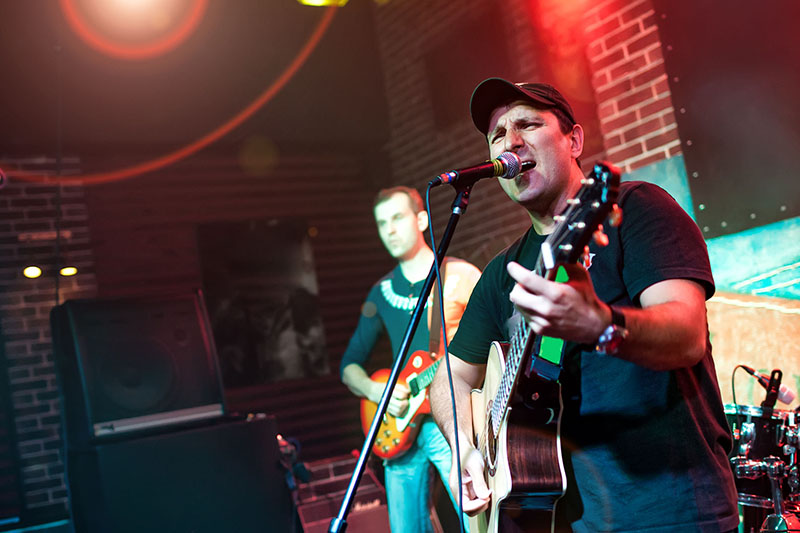
Any event with multiple random and unrelated acts generally classifies as a “festival stage” in the processing core of my noggin. Whether it’s a high school talent show, a local music festival or a church performance, it still means multiple performers taking turns on the same channels. I usually identify the largest group on the ticket and build the channel layout around them, with extra inputs between each group of channels ready for undocumented instruments.
In rushed situations, point any decent condenser (or SM57, or whatever you have left) towards the fretboard where the neck meets the body (on axis) and try to get it within 6 inches of the strings. I’ve worked so many state fairs and local festivals with this approach and it’s always given me something reasonable to mix.
Save yourself some headaches by roughly prepping the channel as well with gentle compression ready and the high-pass filter already engaged. It’s obviously not the ideal situation but it’s simple and effective, especially with little or no help managing the stage.
Ken “Pooch” Van Druten: I handle guitar inputs with reverence towards the player’s tone. Who am I to say that it should sound any different in the house than it does standing right in front of their amps? Truly (more so than any other input) I’m just making the instrument louder.
My usual approach is a speaker DI (Palmer PDI-09), which captures the tone directly after amplification, and then a large-diaphragm mic (usually an Audio-Technica AT4050 multipattern condenser) where the capsule of the mic splits the dust cap of the speaker. The mic captures the “ummmmfffff” of the speaker that just doesn’t translate in a DI.
Generally I try to phase align the two sources but sometimes they sound better combined unaligned. (Use your ears!) For a more traditional rock sound, I’ve used the old standby of a 57 and 421 combined with no DI, and it often works very well. I’ve also had some success with ribbon mics in front of guitars, but because of their inherent polar pattern (figure 8) it’s harder on a very loud stage because the capsule picks up a lot of other things.
Samantha Potter: With really talented guitarists, I leave their timbre and tone in their own hands. The processing I do for them is minimal – some corrective EQ if necessary. I don’t like to compress them or change much about their system because I know how hard it is to get the exact sound they want. (Don’t we all?) I like a DI input and a miked cab input with a 57 to keep things classic and simple while giving myself a little artistic control to balance between these two inputs.
When it comes to guitarists who I perhaps trust slightly less, it’s about control. I also prefer to take two inputs from these guitarists because it adds a layer of control – and it’s less about artistry. This also allows me to send a very clean signal to monitors without having to worry about the smothering of other inputs. I add some compression as a control variable and maybe even a splash of reverb to liven it up.
And if I’ve got inputs to blow, I like to do the old New York compression trick where you take two copies of the same signal and crush one to death with a compressor, and then mix it in with the clean copy. It adds a lot of punch and depth.
Chris Huff: We’ve recently dropped our guitar amp in place of a Kemper amp modeler, and this was the musician’s choice. It sounds great – more than great to be honest. When it comes to an acoustic guitarist using effects, I like to get two signals from them: wet and dry. I don’t mind getting a great sound with the right effects but sometimes those effects can reduce clarity. With the dry signal, I can blend a little in to bring back some clarity so the guitar can cut through the mix.
